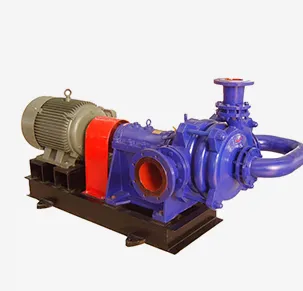English
- Afrikaans
- Albanian
- Amharic
- Arabic
- Armenian
- Azerbaijani
- Basque
- Belarusian
- Bengali
- Bosnian
- Bulgarian
- Catalan
- Cebuano
- Corsican
- Croatian
- Czech
- Danish
- Dutch
- English
- Esperanto
- Estonian
- Finnish
- French
- Frisian
- Galician
- Georgian
- German
- Greek
- Gujarati
- Haitian Creole
- hausa
- hawaiian
- Hebrew
- Hindi
- Miao
- Hungarian
- Icelandic
- igbo
- Indonesian
- irish
- Italian
- Japanese
- Javanese
- Kannada
- kazakh
- Khmer
- Rwandese
- Korean
- Kurdish
- Kyrgyz
- Lao
- Latin
- Latvian
- Lithuanian
- Luxembourgish
- Macedonian
- Malgashi
- Malay
- Malayalam
- Maltese
- Maori
- Marathi
- Mongolian
- Myanmar
- Nepali
- Norwegian
- Norwegian
- Occitan
- Pashto
- Persian
- Polish
- Portuguese
- Punjabi
- Romanian
- Russian
- Samoan
- Scottish Gaelic
- Serbian
- Sesotho
- Shona
- Sindhi
- Sinhala
- Slovak
- Slovenian
- Somali
- Spanish
- Sundanese
- Swahili
- Swedish
- Tagalog
- Tajik
- Tamil
- Tatar
- Telugu
- Thai
- Turkish
- Turkmen
- Ukrainian
- Urdu
- Uighur
- Uzbek
- Vietnamese
- Welsh
- Bantu
- Yiddish
- Yoruba
- Zulu
Telephone: +86 13120555503
Email: frank@cypump.com
Sep . 22, 2024 09:17 Back to list
submersible sewage pumping systems handbook
Understanding Submersible Sewage Pumping Systems A Comprehensive Overview
Submersible sewage pumping systems play a crucial role in modern wastewater management, efficiently transporting sewage from underground locations to treatment facilities. Characterized by their compact design and powerful operation, these systems are preferred in various applications, including residential, commercial, and municipal wastewater infrastructure.
At the core of any submersible sewage pumping system is the submersible pump itself. Unlike traditional pumps, which are installed above ground and draw up sewage, submersible pumps are fully submerged in the sewage they are tasked to handle. This unique placement allows for a more efficient pumping process, reducing the need for long suction lines and minimizing the risk of air locks. Submersible pumps are typically equipped with a hermetically sealed motor, which not only enhances their longevity but also protects against potential damage from corrosive and abrasive sewage components.
The operational efficiency of submersible sewage pumps is also enhanced by their design features. Most models are designed with vortex or semi-vortex impellers that reduce the likelihood of clogging, a common problem in sewage applications. The impeller design allows for the handling of solid waste materials, such as plastics and rags, without compromising the system’s performance. This is particularly important in areas where the sewage may contain debris that could obstruct traditional pumping systems.
submersible sewage pumping systems handbook

Installation of submersible sewage pumping systems is generally straightforward. These systems can be installed in various environments, including wet wells, lift stations, and even directly in sewage pits. The compact design allows for easy integration into existing frameworks without requiring extensive modifications to existing infrastructure. Proper installation is crucial, however, to ensure that the system operates efficiently and prevents groundwater contamination.
Maintenance of submersible pumps is vital to ensure long-term performance and reliability. Regular inspections and cleaning of the pumps can prevent buildup of debris and other materials that could hinder performance. Many manufacturers offer automated monitoring systems that can alert operators to potential issues such as blockages or mechanical failures, allowing for proactive maintenance.
Moreover, efficiency in energy use is an important consideration for submersible sewage pumping systems. With rising energy costs and increased focus on environmental sustainability, many modern systems are designed to minimize energy consumption while maximizing output. Variable frequency drives (VFDs) are commonly used in conjunction with submersible pumps to adjust the speed of the pump according to the flow requirements, thereby achieving greater energy efficiency.
In conclusion, submersible sewage pumping systems are an essential component of effective wastewater management solutions. Their design and operational capabilities make them well-suited to handle the complexities of sewage transport, while their ease of installation and low maintenance requirements add to their appeal. As municipalities and industries continue to invest in sustainable infrastructure, the adoption of advanced submersible pumping technologies will likely play a pivotal role in ensuring reliable and efficient sewage management for years to come.
-
Horizontal Split Case Pump with GPT-4 Turbo | High Efficiency
NewsAug.01,2025
-
ISG Series Pipeline Pump - Chi Yuan Pumps | High Efficiency, Durable Design
NewsAug.01,2025
-
Advanced Flue Gas Desulfurization Pump with GPT-4 Turbo | Durable & Efficient
NewsJul.31,2025
-
ISG Series Vertical Pipeline Pump - Chi Yuan Pumps | Advanced Hydraulic Design&Durable Construction
NewsJul.31,2025
-
ISG Series Vertical Pipeline Pump - Chi Yuan Pumps | Energy Efficient & Low Noise
NewsJul.31,2025
-
pipeline pump - Chi Yuan Pumps Co., LTD.|High Efficiency&Low Noise
NewsJul.31,2025










